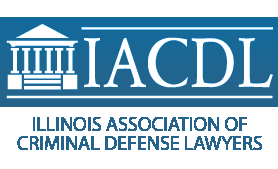Grand Juries and Preliminary Hearings for Most Defendants
 Recently, national news coverage has been focused on decisions made by grand juries not to charge police officers with crimes related to the deaths of Michael Brown and Eric Garner. These cases bring up a whole host of important issues facing our society revolving around race relations and police use of force. But they can also act as a teaching tool. Regarding the grand jury proceedings that happened in these cases, they demonstrate what does not happen in the vast majority of criminal cases.
Recently, national news coverage has been focused on decisions made by grand juries not to charge police officers with crimes related to the deaths of Michael Brown and Eric Garner. These cases bring up a whole host of important issues facing our society revolving around race relations and police use of force. But they can also act as a teaching tool. Regarding the grand jury proceedings that happened in these cases, they demonstrate what does not happen in the vast majority of criminal cases.
Grand Juries for Most People
In Illinois, like in most states, people can be charged with crimes in two different ways. The first way, under the Illinois Constitution, is by a grand jury indictment. Like in these high profile police cases, the grand jury’s job is to determine whether there is probable cause to believe an offense has been committed, and whether there is probably cause to believe the defendant is the one who committed the offense. That is really where the similarities end. While extremely complex cases can sometimes require extended evidence to be presented to a grand jury, in the overwhelming majority of cases brought before them only one or two witnesses will testify. At least one of those witnesses is often a police officer. The witnesses are usually lead through their testimony by the prosecuting attorney who usually then requests that the grand jury indict on some particular charge. Criminal defendants almost never testify in grand jury proceedings because they are not allowed to have a defense attorney present when they do so. For criminal defendants who are not police officers, and thus are not in any way on the same side as the prosecutor, testifying in a grand jury proceeding could be extremely harmful to their case.
The other major difference between the Michael Brown grand jury and most grand juries for regular people relates to the records that were kept and the information that has been released. Most grand jury proceedings are kept secret, and most of the time no transcript is made of the proceedings. So while society as a whole can examine the evidence that was presented in the Michael Brown grand jury proceeding, in normal cases that would never happen. Not even the defendant or the defense attorney is usually allowed to know what happened in front of the grand jury.
The Other Alternative: Preliminary Hearings
A constitutional alternative to a grand jury indictment is the preliminary hearing. In cases handled this way, a hearing is held in front of a judge in which the prosecutor presents evidence to establish probable cause that a crime has been committed and that the defendant committed that crime. The defendant does not testify. Like most grand jury proceedings, these hearings are usually very brief. Probable cause is a very low standard of proof, and if the state has any sort of case at all then the prosecutor will likely be able to get the case past a preliminary hearing.
This brings up the other major difference between how most people are charged with crimes and how these high profile police cases have been handled. In the case involving the death of Michael Brown, the prosecutor presented testimony that supported Officer Wilson’s defense. This simply would not happen in a regular case. Occasional information helpful to the defense might be presented, but it would not be presented to the degree that it was presented in that case.
Criminal Defense Attorney
For most criminal defendants, particularly in state court, prolonged grand jury proceedings are not how they find themselves charged with crimes. Instead they find themselves facing a completely different process that is not often covered by the media, and which can be confusing, especially for first time offenders.
If you or someone you know is facing a possible criminal charges, contact the experienced Rolling Meadows criminal defense attorneys at the Law Offices of Christopher M. Cosley today to schedule a consultation.






















